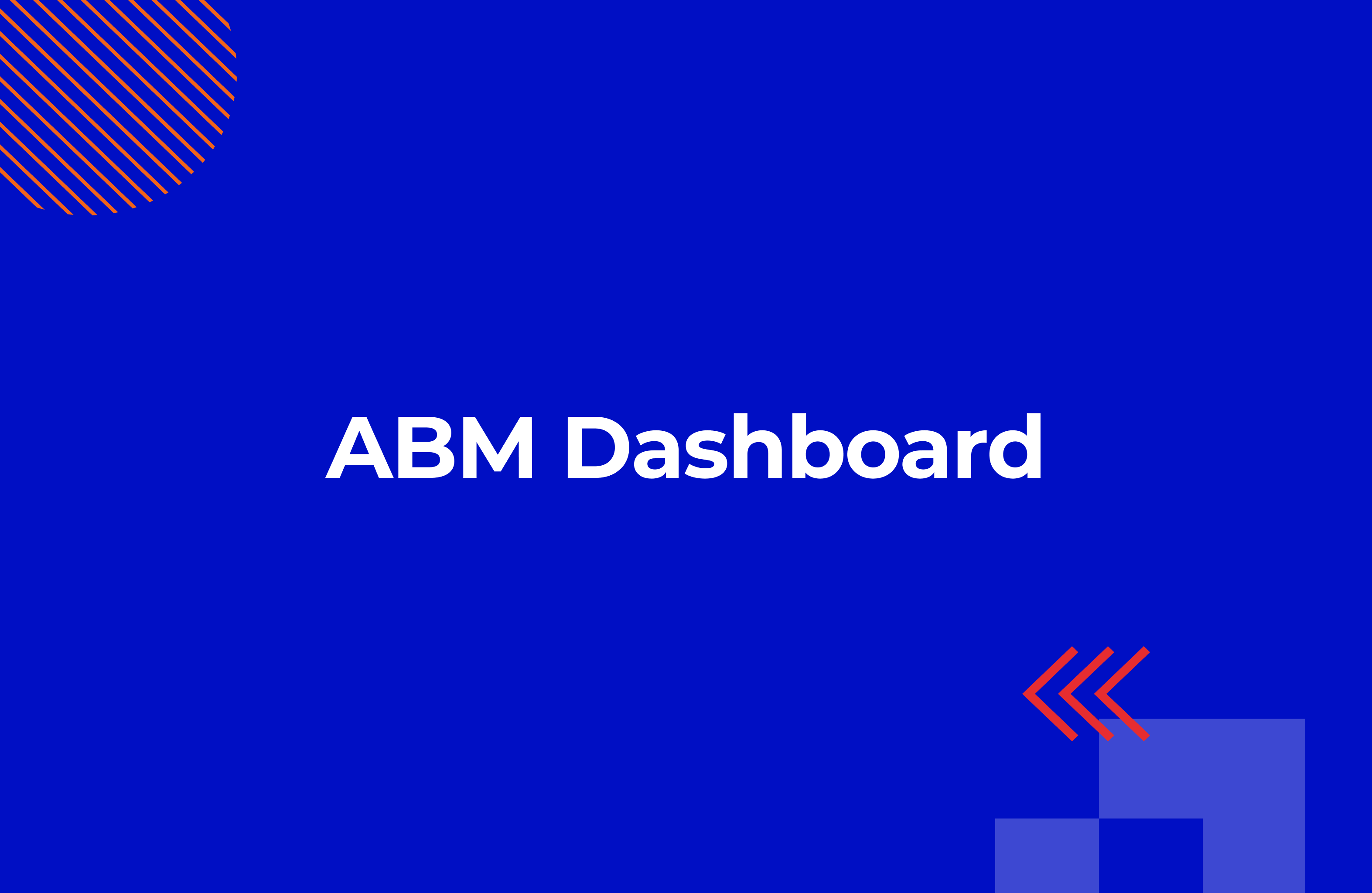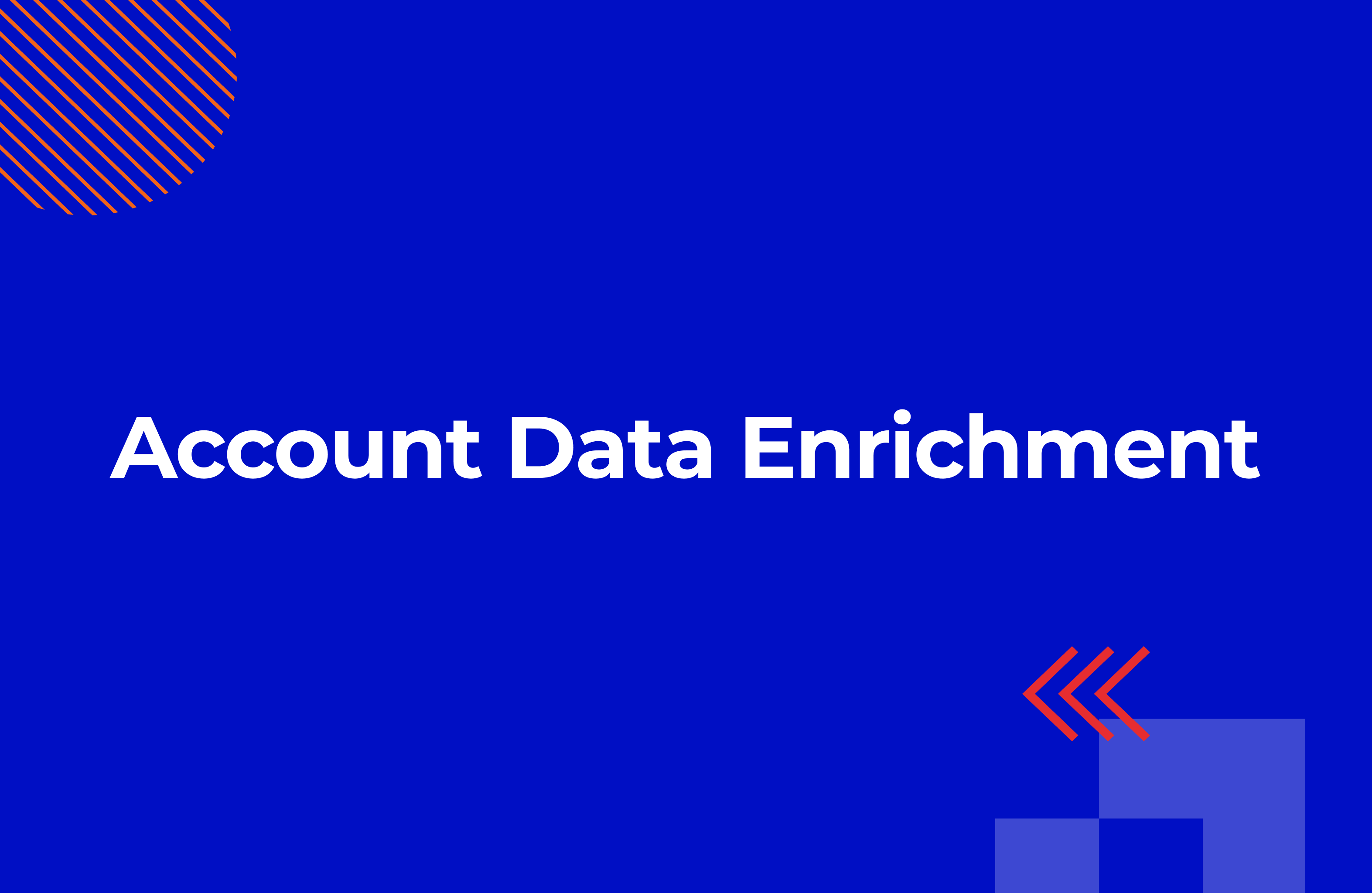In Account-Based Marketing, segmentation is what makes everything else work.
Without it, even the best campaigns fall flat—because your message doesn’t match the account’s context, and your sales team wastes time on the wrong accounts.
HubSpot gives you the structure to fix that: segment accounts by ICP fit, value, and engagement so every play is precise and timed right.
In this article, you’ll learn how to build an ABM segmentation model in HubSpot using firmographics, tiering, and scoring.
We’ll also cover how to use those segments for ABM reporting, so your team focuses on accounts that move the needle.
Table of Contents
Account-based marketing segmentation means breaking down your target account list into focused groups of companies.
You create segments based on an account’s shared traits (e.g. industry), average contract value, and Ideal Customer Profile fit.
Say you're targeting Fintech companies in the DACH region with 500+ employees and a specific tech stack.
That segment becomes your focus for personalized messaging, campaigns, and outreach.
In HubSpot ABM, segmentation is what turns your strategy into action. It powers dynamic lists, custom properties, workflows, and reporting—so you can act on insights, not gut feel.
A strong segmentation strategy is the foundation of effective account-based marketing.
Without it, you treat every target account the same, wasting budget and watering down your messaging.
Segmentation helps you spend time and budget where it will have the most impact. You can invest more in high-value accounts, using one-to-one plays like custom landing pages or personalized video outreach.
At the same time, you can run scalable campaigns for mid-fit segments, such as targeted email nurtures or broad LinkedIn campaigns filtered by industry and tech stack.
When messaging speaks directly to a segment’s priorities, performance improves.
Take manufacturers as an example. When targeting them, you can highlight industry case studies and address pain points like legacy systems, driving higher engagement and response rates.
You can see what’s working at the segment level—which cohorts are engaging, which campaigns are generating meetings or deals, and which verticals are moving fastest through the funnel.
Segmentation gives both teams a shared view of who to target and how to engage them. Marketing knows which accounts to warm up and what messages to lead with. Sales knows which segments are active, what pain points to address, and where to focus outreach.
To run effective ABM in HubSpot, you need a clear way to segment accounts—so your teams know who to target, how much effort to invest, and when to take action.
In the sections below, we’ll walk through a practical approach to building ABM segments in HubSpot in three simple steps:
Start by segmenting accounts using firmographic and technographic data,
Assign tiers based on strategic value and ICP fit.
Use fit + Engagement scoring to prioritise high-intent accounts.
Firmographic segmentation groups companies by their core traits.
These are your baseline HubSpot filters:
Industry (e.g. healthcare, fintech, manufacturing)
Tech Stack (e.g. Shopify users)
Company size (e.g. SMB vs enterprise
Annual revenue (e.g. below €10M, €10–50M, €50M+)
Business model (e.g. B2B, B2C, marketplace)
Geography (e.g. country, region, or market coverage)
(ABM Segmentation in HubSpot: Companies segmented by industry)
Use these to define your addressable segments and tailor outreach based on scale, industry needs, or regional focus.
Tier segmentation helps you group companies based on strategic value and ICP fit, so your team knows where to go all-in and where to scale back. It’s how you decide which accounts get 1:1 treatment—and which ones get nurtured at scale.
Here’s how that typically breaks down:
Tier 1 → Highest-priority accounts. These are your dream clients. They get custom 1:1 content, executive outreach, and a dedicated sales effort.
Tier 2 → Mid-priority accounts. Still valuable, but more scalable. Think industry-specific email sequences, targeted ads, and light personalization.
Tier 3 → Long-tail accounts. These go into automated nurture tracks, generic content flows, or newsletter lists—low effort, high efficiency.
In HubSpot, use a property called “Ideal Customer Profile Tier” to assign and track them. That way, everyone—from marketing to sales—knows exactly how to treat each account.
(ABM Segmentation in HubSpot: Account Tiering)
While firmographic and tier segmentation define who to target, scoring helps you decide when to engage.
By combining Fit Score and Engagement Score, you can keep your segments dynamic and aligned with real-time behavior.
Fit Score → How well the account matches your ICP (based on firmographics, tech stack, business model, etc.)
Engagement Score → How actively the account is interacting with your brand (site visits, email opens, ad clicks, form fills)
In HubSpot, these can be set up as custom score properties that update automatically based on contact or company activity.
Here’s how to act on different combinations:
High Fit + High Engagement → Send to sales for immediate follow-up
High Fit + Mid Engagement → Drop into a targeted nurture sequence
High Fit + Low Engagement → Keep in remarketing lists
(ABM Segmentation in HubSpot: Company Fit and Engagement Scoring)
Once you've segmented your accounts by firmographics, tiers, and engagement scoring, ABM reporting becomes more actionable.
Rather than looking at pipeline or performance in general, you can break it down by segment, tier, industry, or company profile.
This helps you understand not just what’s working, but for whom, and where to double down or adjust.
Segment-based reporting lets your team:
Track pipeline movement by account tier or industry
See which customer segments generate the most revenue
Identify which groups are underperforming or under-engaged
Align sales and marketing resources more effectively
Here are the examples of how segmentation powers HubSpot ABM reports.
These three reports help validate if your segmentation aligns with your actual Service Addressable Market:
Revenue Range shows which segments (e.g. 10M–50M or 50M+) dominate your target list and how that breaks down by verticals like SaaS vs Software Houses.
Growth Stage gives you a view of company momentum—most target accounts are in hypergrowth, which may affect how you prioritize fast-moving opportunities.
Company Size confirms where your ICP skews—e.g., toward 100–249 employees—and whether your messaging and offers match that profile.

(HubSpot ABM Report: Target Accounts by Revenue)

(HubSpot ABM Report; Target Accounts by Growth)

(HubSpot ABM Report: Target Accounts by Company Size)
This dashboard compares the number of companies in each ICP tier against the number of associated open deals.
It helps you evaluate which tiers are generating the most deal activity and where the pipeline is being built.

(HubSpot ABM Report: ICP Tier vs Open Deals)
Treat segmentation like a live system, not a one-time setup. Use this checklist to keep it accurate and usable across your account-based marketing workflows in HubSpot.
Run market research to keep segmentation accurate
Run workshops with RevOps, sales and marketing teams
Define ICP traits, tiers, and disqualification rules
Map buying committees with their jobs-to-be-done, challenges, and product use cases
Document everything in the Enrichment Brief
Check conversion and pipeline by segment to identify patterns
Categorise accounts based on their stage in the sales funnel for tailored marketing and sales efforts
Remove low-engagement or outdated segments
Automate enrichment (via Clay) for customer data to maintain quality
Flag missing values via workflows or dashboards
Lock critical fields to protect scoring logic
Here are the most common segmentation issues and how to fix them before they break targeting, scoring, and handoffs.
If fields like ICP Score or Tier are empty or outdated, the segmentation logic breaks. Target accounts won’t qualify for workflows, lists, or outbound plays—even if they’re a perfect fit.
Fix:
Automate enrichment monthly using Clay
Sync firmographics, technographics, and Smart Properties into HubSpot
Set re-scoring triggers based on new data or lifecycle changes
If multiple teams can freely edit segmentation fields, data quality degrades fast.
Fix:
Lock critical fields like ICP Fit or Tier
Define overwrite rules: enrichment > manual > default.
Assign field ownership (usually RevOps) and review quarzterly
Creating segmented target account lists is useless if no marketing efforts or sales plays are tied to them.
Fix:
Every segment should map to an active motion: an ABM campaign, or an outreach sequence
An effective ABM segmentation strategy in HubSpot turns your ICP, firmographics, and intent signals into structured lists that drive campaigns, scoring, and reporting.
Key Takeaways for Building Account-Based Segmentation in HubSpot:
Segment with purpose: Define segments using firmographics (industry, size, revenue), tier by strategic value, and score accounts by fit + engagement.
Activate your segments: Every segment should map to a campaign, workflow, or sales motion—no list should sit idle.
Tiering = resource strategy: Use tiers to decide how much effort each account deserves (e.g. Tier 1 gets 1:1 plays, Tier 3 gets scaled nurtures).
Scoring = timing signal: Combine fit and engagement scores to surface high-intent accounts in real time for sales action.
Use segments in reporting: Track performance by tier, vertical, or segment to see what’s driving revenue and where to optimize.
Maintain data quality: Automate enrichment (e.g. via Clay), protect critical fields, and align teams around clear scoring and overwrite rules.

.png)


